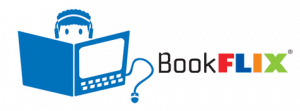calsfoundation@cals.org
What Are You Reading? Lisa Childers
 I teach English, and I’m also a model for conceptual art. I’ve appeared in a few plays at The Weekend Theater and the Arkansas Theatre Festival, and was cast in Lysistrata at The Studio Theater pre-COVID. A couple of years ago, I rediscovered my interest in art, specifically watercolor.
I teach English, and I’m also a model for conceptual art. I’ve appeared in a few plays at The Weekend Theater and the Arkansas Theatre Festival, and was cast in Lysistrata at The Studio Theater pre-COVID. A couple of years ago, I rediscovered my interest in art, specifically watercolor.
What are you reading at the moment or what is next on your list?
At the moment, I’m revisiting Marge Piercy’s 1976 Woman on the Edge of Time. The setting shifts between New York City and two possible futures. Connie, a Hispanic mother living in poverty, has lost her young daughter to the authorities due to alleged abuse and feels worthless. After she physically defends her niece from a pimp prior to a forced abortion, her history of “violence” lands her in the state hospital. There, she is chosen to participate in an experiment involving neural implants for “problem populations.” As this scenario unfolds, she’s experiencing random shifts into two alternate futures: one communal and containing characters reminiscent of several from her past, and the other an extrapolation of the worst of our world’s “advances” in medicine, food production, class and sex divisions, and military-industrial partnerships. In the end, she makes a decision that will determine the rest of her life and, possibly, which version of the future comes to pass.
 Next on my list is something to help me with my painting. I have always loved the art of Edward Hopper, so my next book will be Edward Hopper: The Watercolors. It contains portraits, but also some of the lesser-known paintings that he did of the New England countryside one summer. His placement of figures and the sense of emptiness demand a narrative–you could base a television series on them.
Next on my list is something to help me with my painting. I have always loved the art of Edward Hopper, so my next book will be Edward Hopper: The Watercolors. It contains portraits, but also some of the lesser-known paintings that he did of the New England countryside one summer. His placement of figures and the sense of emptiness demand a narrative–you could base a television series on them.
What role has reading played in your life?
An overwhelmingly large one. Once I’d mastered phonics at age 6, I read everything. Around 8, I became obsessed with Tudor-era England, and I tackled Antonia Frasier’s Elizabeth and Mary, Queen of Scots when I was in third grade. The following year I read all 900-plus pages of my grandmother’s original copy of Gone With the Wind. I give credit to my parents for keeping our house filled with interesting but adult level books. In order to understand them, I had to push myself to learn! While we had mostly non-fiction at home, I could check out anything I wanted from the public library.
 I was not a fan of most books for young people unless they were exceedingly well-written, like A Wrinkle in Time, but when my father gave me a complete set of the beautifully edited Reader’s Digest Best Loved Books for Young Readers, I read classic fiction without the distraction of long sections that I was too young to comprehend.
I was not a fan of most books for young people unless they were exceedingly well-written, like A Wrinkle in Time, but when my father gave me a complete set of the beautifully edited Reader’s Digest Best Loved Books for Young Readers, I read classic fiction without the distraction of long sections that I was too young to comprehend.
I recognized practical and thematic lessons everywhere. From David Copperfield, I gleaned that one can overcome the effects of a childhood tainted by betrayal, abandonment, death, and emotional abuse. Gone With the Wind taught me about survival–it’s not the romantic novel that people who have only seen the movie may expect. I’ve carried the expectation of meaning and purpose in literature into my adult life. If I don’t learn something from a book, it wasn’t worth reading.
What book or other media do you keep coming back to again and again?
 Ray Bradbury’s Dandelion Wine, a non-science fiction book of short stories centered on a boy named Doug in the summer of 1927. It’s full of insights, but I particularly love Bradbury’s gentle analogy that describes aging and death as similar to being an apple on a tree, watching other apples start to fall around you until you begin to fall yourself. Before you even hit the ground, you forget that there ever was an apple, or a tree…each story has many reflective thoughts. It’s the type of writing that shaped my being.
Ray Bradbury’s Dandelion Wine, a non-science fiction book of short stories centered on a boy named Doug in the summer of 1927. It’s full of insights, but I particularly love Bradbury’s gentle analogy that describes aging and death as similar to being an apple on a tree, watching other apples start to fall around you until you begin to fall yourself. Before you even hit the ground, you forget that there ever was an apple, or a tree…each story has many reflective thoughts. It’s the type of writing that shaped my being.
(Top banner image: Learning to Swim by Don Byram, featuring Lisa Childers. Don Byram’s work is available at our retail gallery in the CALS Galleries at Library Square.)



